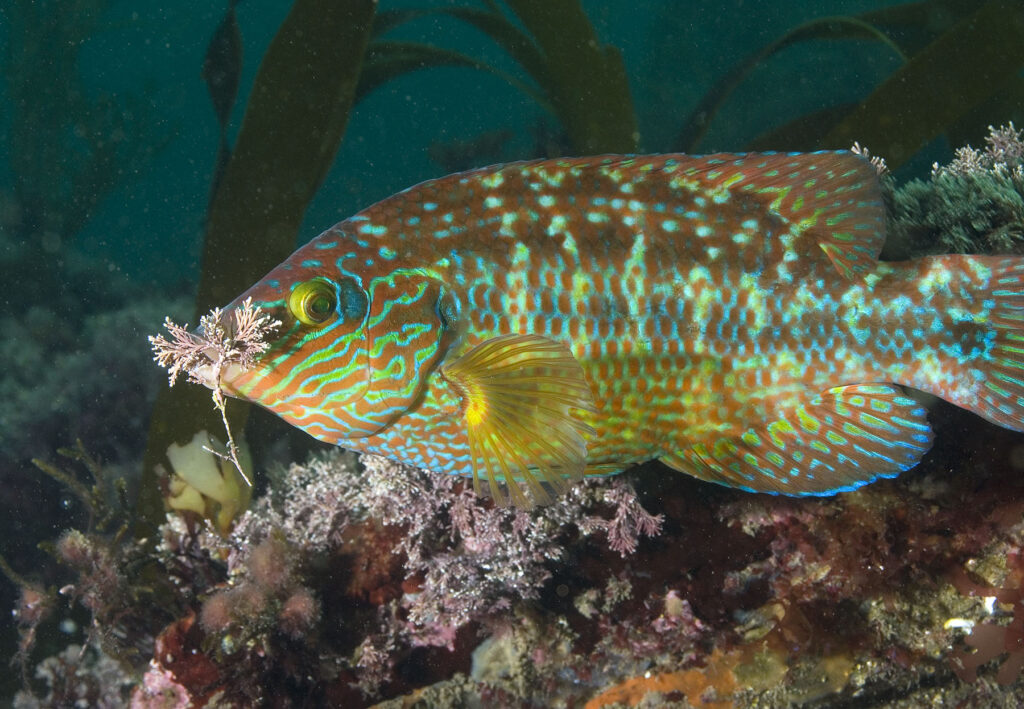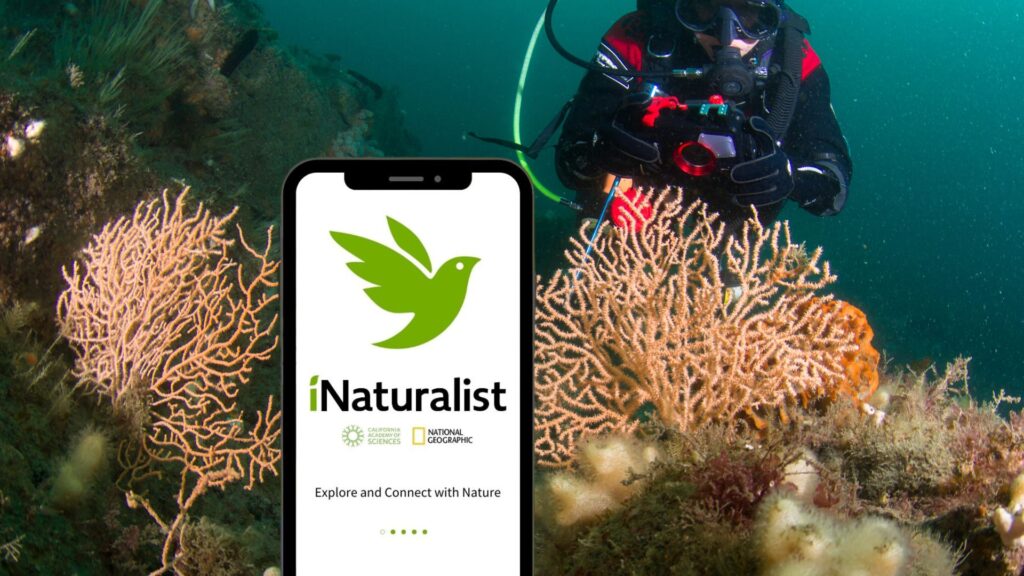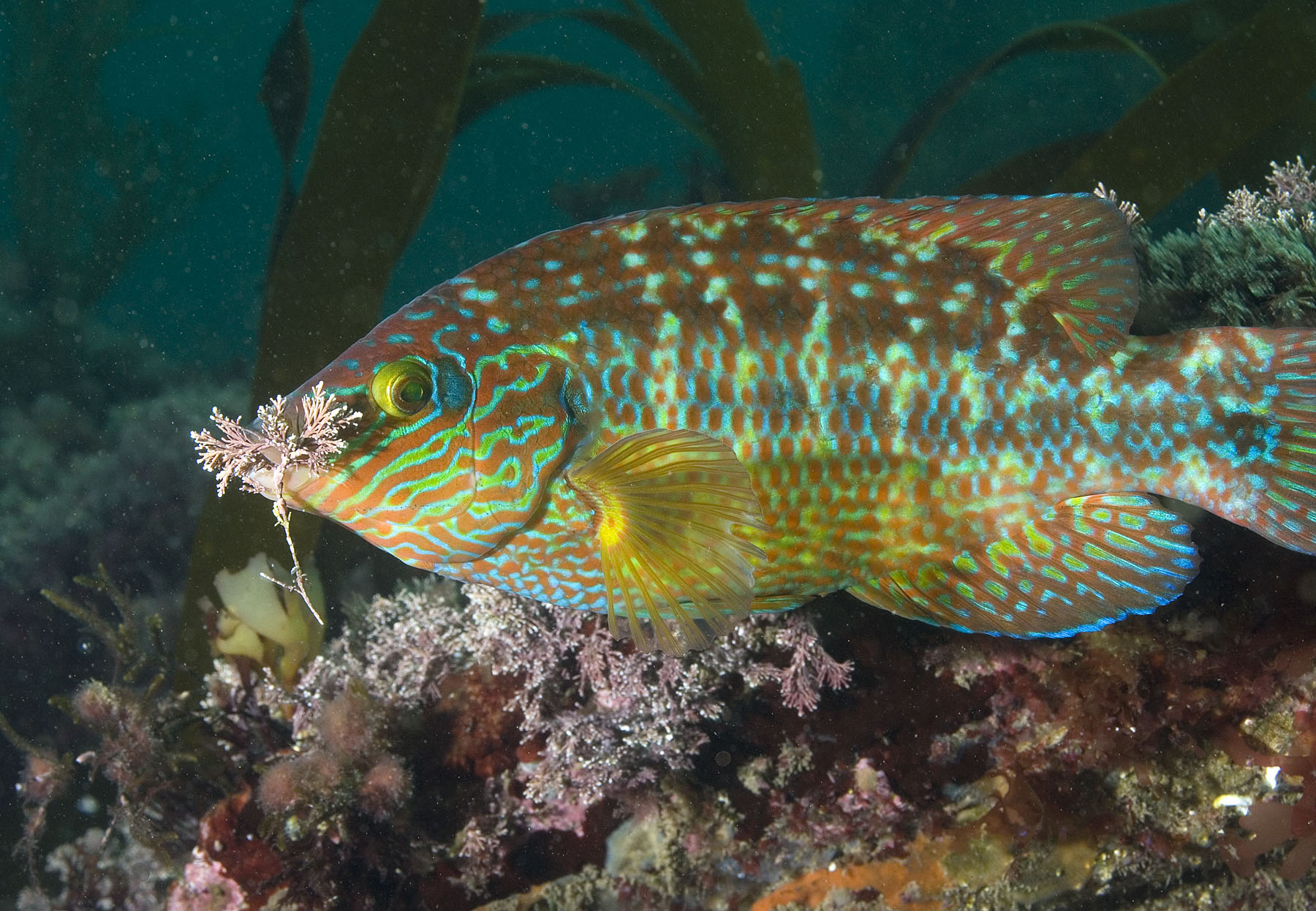Welcome to our Marine Marvels series, where we spotlight the fascinating creatures that call Plymouth Sound National Marine Park home. Today, we’re diving into the world of the corkwing wrasse (Symphodus melops), a charismatic fish that adds a splash of colour to our underwater landscapes.

The corkwing wrasse is a true local character, frequently spotted among our rocky shores and seagrass meadows. These small but vibrant fish play a crucial role in maintaining the health of our marine ecosystems, and their presence is a testament to the rich biodiversity of Plymouth Sound.
Fun Facts about the Corkwing Wrasse
- Colourful Characters: Corkwing wrasses are masters of disguise, with colours varying from green and reddish-green to greeny-brown. Males often sport striking blue lines on their lower halves.
- Size Matters: While they can reach up to 25 cm in length, most corkwing wrasses you’ll spot in Plymouth Sound are less than 15 cm long.
- Spot the Difference: Look out for their distinctive black spot in the middle of the tail stalk and a comma-shaped mark behind the eye.
- Home Sweet Home: These fish are homebodies, preferring rocky shores, seaweed-rich areas, and seagrass beds in depths up to 30 metres.
- Nest Builders: Male corkwing wrasses are talented architects, constructing elaborate nests from seaweed in rock crevices or among seagrasses.
- Cleaner Fish: Like their wrasse relatives, corkwing wrasses exhibit cleaning behaviour, helping to keep other fish free from parasites.
- Local Residents: Corkwing wrasses are year-round inhabitants of Plymouth Sound, showcasing high site fidelity.
- Varied Diet: These little foragers feast on small crustaceans and molluscs, playing a vital role in our marine food web.
Help Study Our Marine Marvels!

Have you spotted a corkwing wrasse or any other marine wildlife in Plymouth Sound National Marine Park? Upload your sightings to the iNaturalist app to contribute to scientific studies of our marine environment. Your observations can help researchers better understand and protect the incredible biodiversity of Plymouth Sound National Marine Park.
You can also upload to our Scenes of the Sound page to have your images featured on our social media platforms with credits!
Remember, every photo counts in our mission to conserve and celebrate the marine marvels of Plymouth Sound. Happy spotting!


